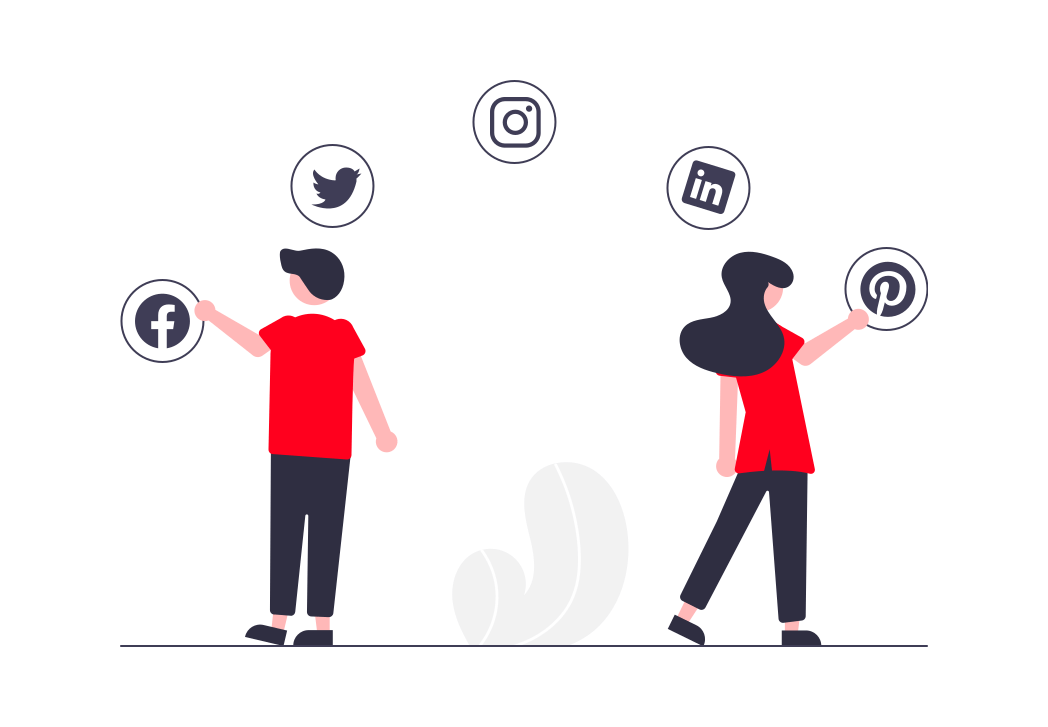SMM is a fast and effective way to establish contact with your target audience and increase awareness of what you’re all about.
Social media marketing (SMM) involves using various popular online platforms as channels through which to promote you, your company and your brand, ramp up your target audience, attract potential customers to your website, and of course, increase sales. Social media is today at the centre of all business marketing methods.
SMM CAN HELP ACHIEVE THE FOLLOWING:
Reach a wider audience
Social media was developed to bring people together and create communities, thus becoming ideal platforms for marketing campaigns and increasing target audiences’ reach. If people enjoy being part of your community, they are more likely to tell others about you and what you have to offer.
Build awareness to promote your company or brand
People are hardly likely to be your customers if they don’t even know that your business exists. They’ll also never become so if they take a dislike to your company and the way it portrays itself. Social media can help you present yourself in a positive light. A well-chosen marketing strategy will lead to increased brand awareness, more followers, and a flow of likes and mentions.

Establish a sound dialogue with the audience and attract new followers
Engagement is one of the most significant business benefits of using social media, but it’s hard to achieve. To interact better, you need to know your audience well and provide content that meets their expectations and interests. When you show genuine interest in your customers, you create loyalty – and they’re less likely to turn to competitors.
Increase sales
Market research confirms that brand awareness directly affects sales growth. Over 60 per cent of consumers say they are more willing to buy products and use the services of those companies whose social media content is consistently familiar and with which they readily identify.
All of what’s mentioned above proves that social media is the most effective way of delivering the right information where it matters. However, there are those who use social media solely to voice concerns or post complaints about a company, its products or services. The die-hard moaners. But just to recap, here are the benefits of managing social media well and how it can be used in neutralising negativity:
Promoting a company or brand in social media:
- analysing the presence of a company or brand on social media;
- analysing the competitive playing field and target audience;
- developing an SMM strategy;
- defining corporate style of communication in social networks;
- creating a balanced content plan which comprises advertising, entertainment and information materials;
- creating optimised visual and written content;
- frequent publishing of engaging content;
- ensuring posts go viral;
- launching advertising campaigns on social networks;
- building communications with the audience;
- constant monitoring of mentions in social networks.
Countering negativity in social media:
- analysing the presence of a company or brand on social media;
- analysing the competitive playing field and target audience;
- identifying negativity and those areas of reputational risk;
- understanding the psychology behind negative sources;
- creating a strategy for responding to criticisms;
- defining corporate style of communication in social networks;
- creating a content plan to smooth out the ill effects of the negative;
- creating optimised visual and written content;
- frequent publishing of engaging content;
- ensuring positive posts go viral;
- building trustful communications with the audience;
- constant monitoring of mentions in social networks.
COUNTERING NEGATIVITY ON SOCIAL MEDIA PLATFORMS
Social media content can spread at an incredible rate, and often the wrong information gets passed on. It’s necessary, therefore, to constantly monitor the mentions of a company or brand and handle any negativity that appears on social networks in a timely manner.
Even if a company doesn’t have a Facebook or Twitter account or something similar, its reputation can be severely damaged somewhere on social media. Bad news often travels faster than good, and if a potential client sees criticism of the company from relatives, friends, or influencers, he or she is unlikely to make a purchase or order a service. Given these reputational risks, companies need to make a tremendous effort in building a positive social media image.
Social media negativity can appear for a variety of reasons, such as:
- Constructive negative. The user expresses dissatisfaction with the purchased product or service, citing facts and evidence without succumbing to emotions. Unfortunately, this kind of negativity is scarce.
- Impulsive negative. The user posts negative feedback about the company, the purchased product or service, painting everything an emotional black. This kind of negativity is often false in what’s stated and can be downright insulting. However, in the vastness of the social network universe, it appears far too frequently.
- Specially-ordered negative. Competitors do not always act honestly and legally. As a result, libellous comments in postings about the company and its services or products can appear on any platform that is not strictly regulated.
- Activity-related negative. This kind of negativity does not apply to a specific brand but expresses dissatisfaction with the entire business area as a whole.
In the event of a negative appearance on social media, a quick response is necessary. At the same time, you can convey your point of view to the individual and/or the wider audience and resolve the matters raised as best suits each case.
SMM PLATFORMS
In 2019, statistics showed that Internet users spent, on average, two hours and 24 minutes daily on social media activity. In 2020, this increased by 1.4 per cent to two hours 26 minutes. Therefore, social platforms open up great opportunities to attract large target audiences and build long-term relationships with potential and existing clients.
More than half of the world’s population, about four billion people, use social media. Online platforms are critical in building brand awareness. According to research data, 74 per cent of people search for information through social networks for products and services. This means that today, in 2021, a would-be buyer’s journey increasingly begins with Instagram, Telegram, Facebook, Twitter, Pinterest, LinkedIn and YouTube, among others. In this regard, the influence of social networks on sales is growing every year.

Instagram is an incredible success and stands out from other social media platforms. The number of Instagram users is growing rapidly every day. It has become an excellent platform for creating personal, company and brand images. According to data for 2020, the number of active users of the social network was 1.2 billion people.
Telegram
Telegram is one of the world’s fastest-growing messenger services. Its audience growth is estimated at 700,000 new users daily. By the end of 2021, that total is likely to hit a billion. Telegram channels are therefore unique as magnets to attract vast target audiences, achieved even in just a day.


YouTube
The largest video hosting service globally, YouTube regularly attracts two billion users daily. A video posted on YouTube can skyrocket to the top of search results, drawing users’ attention to a particular brand or company. The platform is superb for creating consumer loyalty to brands and, with its popularity, the target audience reach is almost limitless.
ADVES experts will help you determine which social networks are most suitable for achieving your goals. We have a proven track record of managing social networks for digital, trade, financial, construction and manufacturing companies worldwide. Each project will involve a team of copywriters, designers, SMM specialists, marketing gurus and anti-crisis managers if the situation requires – and that’s just for starters!

DO YOU HAVE ANY QUESTIONS?
By pressing "To send", you agree with the
Policy of confidentiality of ADVES
